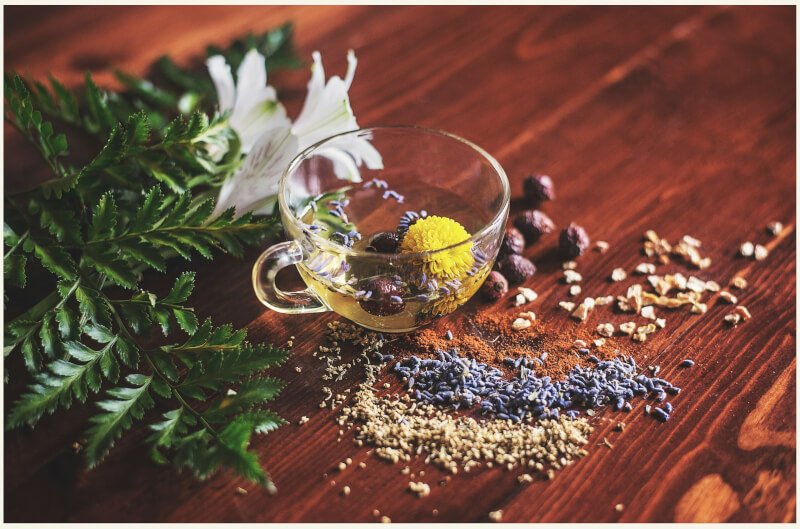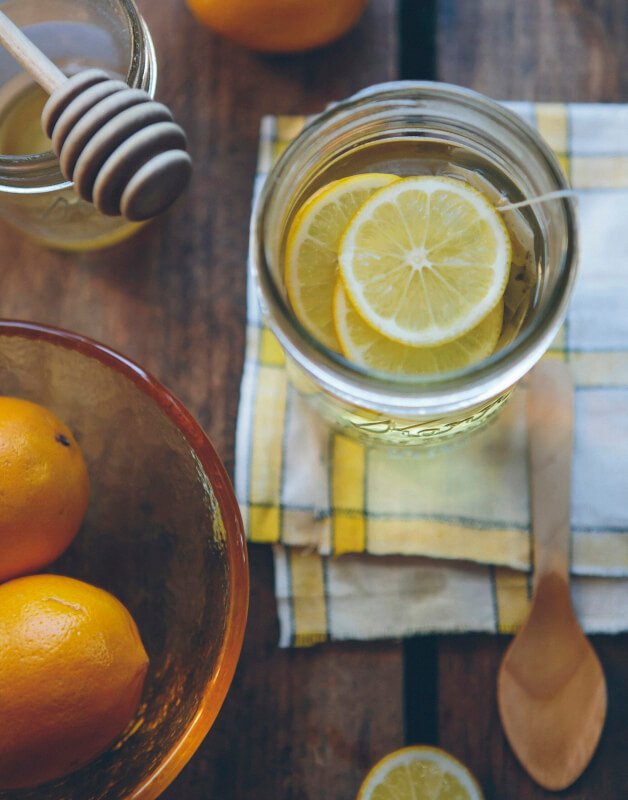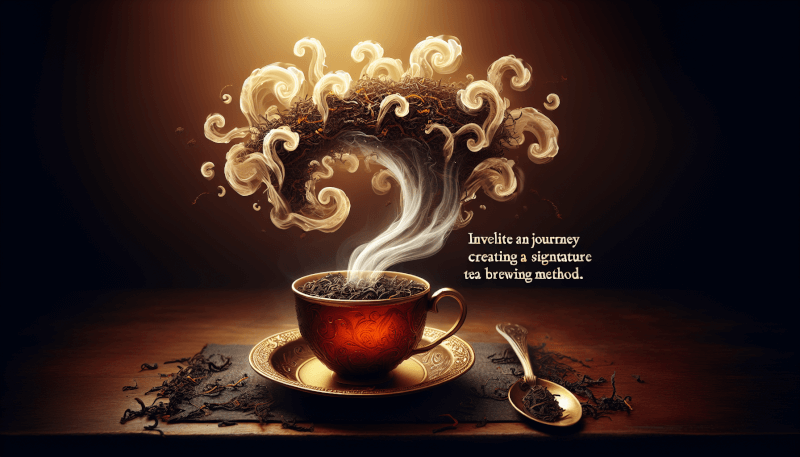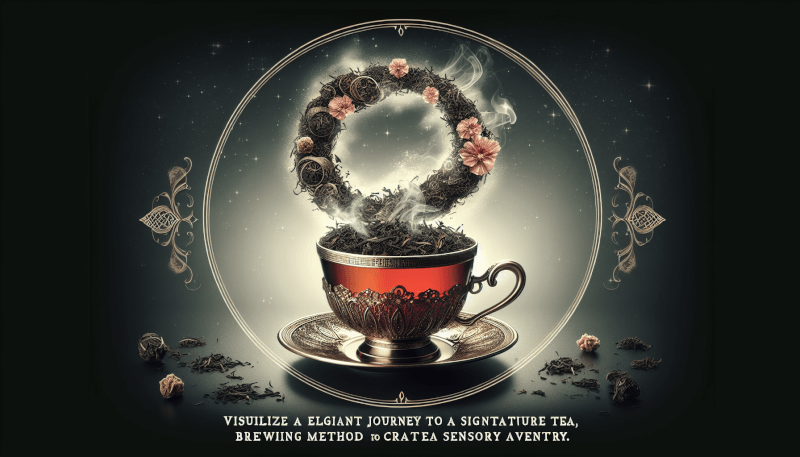Are you tired of following traditional tea brewing methods and longing for a unique blend tailored specifically to your taste? Look no further! In this article, we will provide you with tips on how to create your very own signature tea brewing method. Whether you prefer a strong and robust cup or a delicate and floral infusion, we have got you covered. Get ready to explore the world of tea and unlock your creativity as you embark on a journey to discover your own personalized tea brewing technique.

Choosing the Right Tea
When it comes to brewing the perfect cup of tea, the first step is to choose the right tea type. Whether you prefer black tea, green tea, herbal tea, or any other variety, each type has its own unique flavor profile and brewing requirements. Consider your personal preferences and the occasion when selecting your tea. Are you looking for a strong and robust flavor or a light and refreshing one? Do you want to relax with a soothing herbal blend or invigorate yourself with a vibrant green tea? Take your time to explore different tea types and find the one that suits your taste.
Quality matters when it comes to choosing tea. While it may be tempting to opt for cheaper options, investing in high-quality tea will greatly enhance your brewing experience. Look for teas that are sourced from reputable vendors and have undergone proper processing techniques. Pay attention to the appearance, aroma, and overall freshness of the tea leaves. Quality teas are usually plucked at the right time and handled with care during processing, resulting in a more flavorful and enjoyable brew. Remember, a cup of tea is only as good as the tea leaves used to make it.
Experimenting with tea blends is a great way to add diversity and excitement to your tea brewing journey. Blending different teas together can create unique flavor combinations that suit your taste preferences. You can mix different tea types or experiment with adding herbs, spices, flowers, or fruits to create your own signature blend. Get creative and have fun exploring the endless possibilities of tea blending. You never know, you might stumble upon a truly delightful and one-of-a-kind blend that becomes your go-to favorite.
Selecting the Perfect Water
While the tea itself plays a vital role in brewing a perfect cup, the quality of the water you use cannot be overlooked. The water you choose should be clean, free from impurities, and have a neutral taste that won’t overpower the delicate flavors of the tea. Using filtered water is highly recommended to ensure the best possible taste.
Understanding water temperature is crucial for achieving optimal flavor extraction from the tea leaves. Different teas require different water temperatures for steeping. Generally, green and white teas are best steeped in water that is around 175°F (80°C), while black teas benefit from hotter water at around 205°F (96°C). Herbal teas can be steeped at boiling temperature. Invest in a good thermometer or electric kettle with temperature control to accurately measure the water temperature.
Finding the right water-to-tea ratio is essential for achieving the desired strength and flavor of your brew. As a general rule, use one teaspoon of loose tea leaves or one tea bag per 8 ounces (240 ml) of water. However, this can be adjusted based on personal preference. If you prefer a stronger brew, you can increase the amount of tea leaves or steep the tea for a longer time. Similarly, if you prefer a milder flavor, you can decrease the amount of tea leaves or shorten the steeping time. Experiment with different ratios until you find the perfect balance for your taste buds.

Finding the Ideal Teapot or Infuser
Your choice of teapot or infuser also plays a role in the overall tea brewing experience. Teapots are available in various materials, including ceramic, glass, clay, and stainless steel. Each material has its own unique properties that can affect the taste and aroma of the tea. Ceramic teapots are popular for their ability to retain heat, while glass teapots allow you to observe the color and clarity of the tea as it brews. Clay teapots, such as Yixing teapots, are prized for their ability to enhance the flavor of the tea over time. Consider your personal preferences and the type of tea you want to brew when choosing the material of your teapot.
Size matters when it comes to selecting a teapot. Consider the number of people you usually brew tea for and choose a teapot that can accommodate that amount. A smaller teapot is great for individual servings, while a larger teapot is suitable for brewing tea for a group. A teapot that is too small may result in a stronger brew, while a teapot that is too big can make the tea taste diluted. Find a teapot size that suits your brewing needs and enjoy a perfectly balanced cup every time.
Teapot designs can also add an aesthetic appeal to your tea brewing ritual. From traditional and elegant to modern and whimsical, there are countless teapot designs available to choose from. Explore different shapes, colors, and patterns that resonate with your personal style and bring joy to your brewing experience. Whether it’s a classic porcelain teapot or a contemporary glass infuser, let your teapot reflect your unique taste and personality.
Understanding Tea Steeping Times
Steeping times play a crucial role in extracting the flavor, aroma, and beneficial compounds from the tea leaves. While general guidelines can be followed, it’s important to remember that personal preference should ultimately determine the steeping time.
As a starting point, black teas are typically steeped for around 3 to 5 minutes, while green teas are best steeped for 1 to 3 minutes. Herbal teas can be steeped for a longer time, usually around 5 to 7 minutes. However, these times can be adjusted based on your taste preferences. If you prefer a stronger brew, you can steep the tea for a longer time. Likewise, if you prefer a milder flavor, you can reduce the steeping time. Remember to take notes of the steeping time for each variety of tea you brew to help you refine your brewing method over time.

Mastering the Art of Tea Temperature
The temperature at which you steep your tea greatly impacts the flavor and characteristics of the final brew. Determining the optimal temperature for each tea type ensures that you extract the most flavor without causing any bitterness or astringency.
Black teas generally require hotter water, around 205°F (96°C), to fully release their bold flavors. Green teas, on the other hand, are more delicate and should be steeped at a lower temperature, around 175°F (80°C), to avoid bitterness. Experimenting with different water temperatures for different teas will help you discover the sweet spot that enhances the taste of each variety.
Achieving the desired strength of your tea can be influenced by the temperature at which it is brewed. If you prefer a stronger brew, you can increase the temperature slightly and steep for a longer time. Conversely, if you prefer a milder flavor, use slightly cooler water and decrease the steeping time. Finding the perfect balance of temperature and steeping time is a matter of personal preference, so don’t be afraid to experiment and adjust to suit your taste.
Don’t be afraid to experiment with varying tea temperatures. Some teas, like oolongs, can be brewed at different temperatures to bring out different flavor profiles. Playing around with the temperature can uncover hidden nuances and characteristics of the tea, allowing you to fully appreciate its complexity.
Implementing Proper Tea Leaf Measurements
Tea leaf measurements are essential to achieve consistent and reproducible results when brewing your favorite cup of tea. Accuracy in measuring the tea will ensure that you can control the strength and flavor of your brew.
Using a tea scale or teaspoon is a practical way to measure loose tea leaves accurately. A general guideline is to use approximately one teaspoon of loose tea leaves per 8 ounces (240 ml) of water. However, this measurement can be adjusted based on personal preference. If you prefer a stronger brew, you can increase the amount of tea leaves. Likewise, if you prefer a milder flavor, you can decrease the quantity. It’s all about finding the perfect balance that makes your taste buds sing.
Keep in mind that different tea types may require different amounts of tea leaves. For example, black teas are generally steeped with a higher tea-to-water ratio compared to green teas. Herbal teas, on the other hand, can often be steeped with a larger quantity of tea leaves due to their natural mildness. Take into account the type of tea you’re brewing and adjust the measurements accordingly.

Experimenting with Tea Steeping Techniques
Tea steeping techniques go beyond simply steeping the tea leaves in hot water. Trying different steeping methods can elevate your tea brewing experience.
One technique to try is gongfu brewing. This method, commonly used for Chinese teas, involves using a small teapot and short steeping times. By steeping the tea leaves multiple times in quick successions, you can extract different layers of flavor and experience the tea’s evolution with each infusion. Gongfu brewing can be a meditative and enjoyable way to fully appreciate the complexities of certain teas.
Cold brew tea is another technique worth exploring, especially during the hot summer months. This method involves steeping the tea leaves in cold water for an extended period, typically overnight. Cold brew tea tends to have a smoother and sweeter flavor profile compared to hot brewed tea. Experiment with different tea types and steeping times to find the perfect cold brew ratio that suits your taste.
Consider exploring the art of multiple infusions, also known as resteeping. Some high-quality teas, particularly oolongs and pu-erhs, can be steeped multiple times to extract different flavors and aromas with each infusion. This allows you to make the most of your tea leaves and fully appreciate their complexity. Don’t be afraid to experiment with different steeping times and water temperatures to uncover the nuances each infusion has to offer.
Enhancing Flavors with Additional Ingredients
Adding additional ingredients to your tea can take your brewing experience to a whole new level. Spices, herbs, fruits, and citrus are just a few examples of ingredients that can complement and enhance the flavors of your tea.
Adding spices or herbs like cinnamon, ginger, or mint can infuse your tea with a delightful aroma and unique taste. These ingredients can add warmth, freshness, or a touch of sweetness to your brew, depending on your preferences. Experiment with different combinations to create your own personalized blend.
Incorporating citrus or fruit slices into your tea can bring a refreshing and tangy twist to the flavor. Lemon, lime, orange, or even berries can brighten up your cup and add a burst of natural sweetness. Not only do these ingredients contribute to the overall taste, but they also provide visual appeal.
Using sweeteners like honey, sugar, or maple syrup can balance the flavors of certain teas and add a touch of sweetness. Be mindful of the type of tea you’re brewing and the level of sweetness you desire. Some teas, such as flavored black teas or herbal blends, may naturally lend themselves to being enjoyed with a sweetener. Others, like delicate white or green teas, may be best enjoyed without any added sugar.
Milk or creamy alternatives can also be added to certain teas to create a richer and more indulgent experience. This is particularly popular with black teas, as it helps to mellow out any bitterness and adds a smooth, velvety texture. Experiment with different types of milk, such as cow’s milk, almond milk, or oat milk, to find the perfect combination for your taste buds.

Creating a Relaxing Tea Brewing Environment
Brewing tea is not just about the tea itself, but also the experience and ambiance it creates. Creating a relaxing tea brewing environment can greatly enhance your enjoyment and help you fully immerse yourself in the process.
Choose a quiet and comfortable space where you can sit back, unwind, and savor your tea. Whether it’s a cozy corner in your home, a serene garden, or a dedicated tea room, find a place that allows you to create a peaceful and intimate connection with your tea. Remove any distractions, such as noise or clutter, to ensure a serene atmosphere.
Set up a designated tea station that houses all your brewing essentials. This can include your teapot, tea cups, filters, spoons, and any other accessories you use during the brewing process. Having everything you need within easy reach not only makes the brewing process more efficient but also adds a sense of organization and purpose to your tea routine.
Use calming scents or light scented candles to create a soothing aroma in your brewing space. Fragrances like lavender, chamomile, or jasmine can induce a feeling of relaxation and tranquility. Be mindful of any allergies or sensitivities you or others may have and choose scents that resonate with you personally.
Recording and Adapting Your Brewing Method
Taking detailed notes of your brewing process is essential for creating your own signature tea brewing method. With each cup of tea you brew, jot down important details such as the type of tea you used, steeping times, water temperatures, and any additional ingredients or techniques you experimented with.
By keeping track of your brewing method and making notes on the taste and enjoyment of each cup, you can refine and adapt your technique over time. If you find that a particular tea tasted too bitter, you can adjust the steeping time or water temperature for the next brew. If you discover a new combination of ingredients that elevated the flavor, you can incorporate it into your brewing routine. These notes serve as a valuable reference point for future tea brewing sessions, allowing you to consistently create your desired cup of tea.
Personalize and refine your signature brewing method based on your preferences and feedback from others. Share your tea creations with friends and family, and gather their input on what they enjoy most about your tea. Use their feedback to adapt your brewing method and make tweaks that align with the tastes of those who will be enjoying your tea. Constantly refining your brewing method ensures that each cup of tea you brew becomes a unique and delightful experience.
In conclusion, creating your own signature tea brewing method is a journey of exploration, experimentation, and enjoyment. By considering the tea type, water quality, teapot or infuser, steeping times, tea temperature, tea leaf measurements, steeping techniques, additional ingredients, brewing environment, and recording your process, you can develop a brewing method that caters to your unique taste buds. Have fun, embrace the process, and savor every sip of your perfectly brewed cup of tea. Cheers to becoming a tea brewing maestro!

